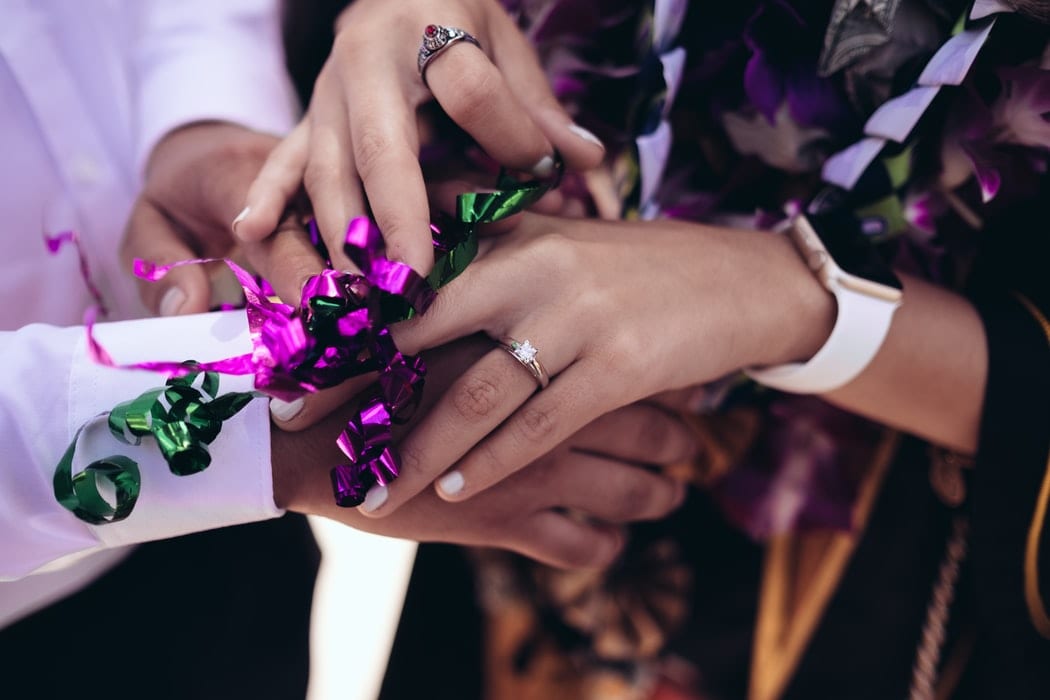
Table of Contents
As Jewelry Shopping Guide editors, we write about things that we love and we think you’ll like too. We often have affiliate partnerships, and may generate some revenue from these links at no cost to you.
From the square diamond cuts, the princess and the radiant are two beautiful and popular choices. They are especially sought after for engagement rings. However, apart from their similarity in terms of shape, these two cuts have many differences that set them apart from each other.
Choosing between the princess and the radiant cuts can be difficult, so let’s break down the pros and cons of these cuts as well as what distinguishes each cut and which is the better choice for you.
Princess vs Radiant – Quick Introduction
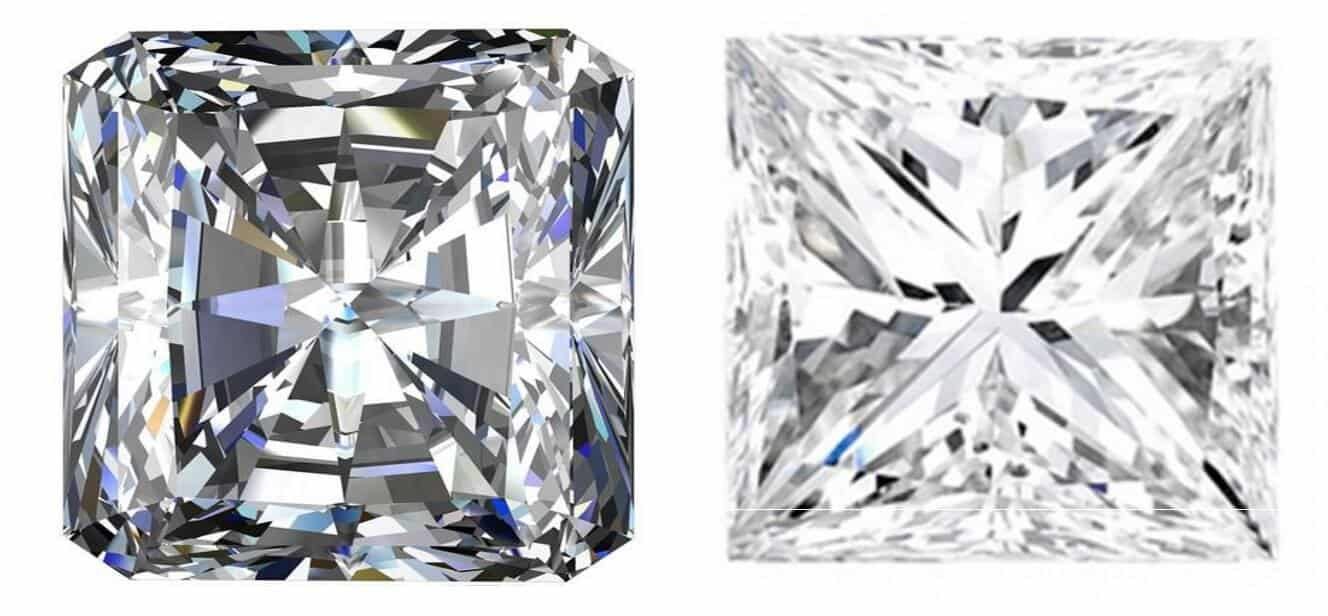
The radiant cut is a relatively new diamond cut and was only created about 30 years ago. It is a highly brilliant cut that contains 70 carefully arranged facets. The radiant cut has the elegant look of an Asscher or emerald cut with the sparkle of a round brilliant, making it a great choice for those who want something different.
The princess cut is the second most popular diamond cut after the round brilliant, and the most popular of the square cuts. It has exceptional sparkle with excellent light performance. This cut is also quite new, having being created in the 1960s with the aim of bringing the brilliance of a round diamond to a square cut.
Both these cuts have a modern look and look especially ideal when placed in contemporary settings.
Princess vs. Radiant – Cut
The princess and radiant cuts are square in appearance, but apart from this similarity, they are quite different in terms of their shapes.
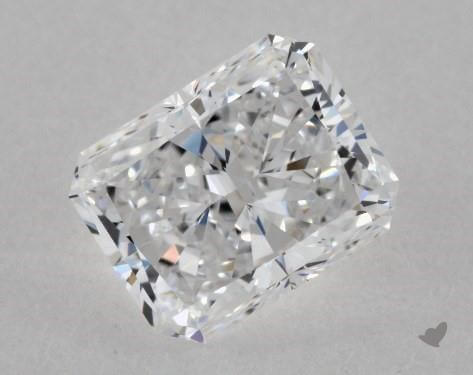
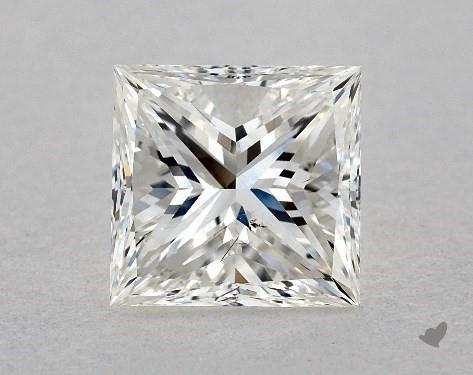
The princess cut is almost always square, with sharp corners. The ideal length to width ratio for the square princess is 1.00 to 1.05.
It can sometimes be more rectangular, although this is rare.
The radiant cut can be found in either square or rectangular shapes, although elongated radiants are more common. Unlike the princess cut, the corners of the radiant cut are truncated, giving it 8 sides.
Apart from this, the princess and radiant cuts differ in the number of facets that they contain, with the radiant containing 70 and the princess having 58 (modern versions have 76). They also differ in terms of depth, with the princess often cut deeper than the radiant for enhanced light performance.
Princess vs. Radiant – Brilliance
Both the princess and the radiant cuts were designed to maximize the sparkle of the diamond, so they both make excellent choices if you want a brilliant diamond.
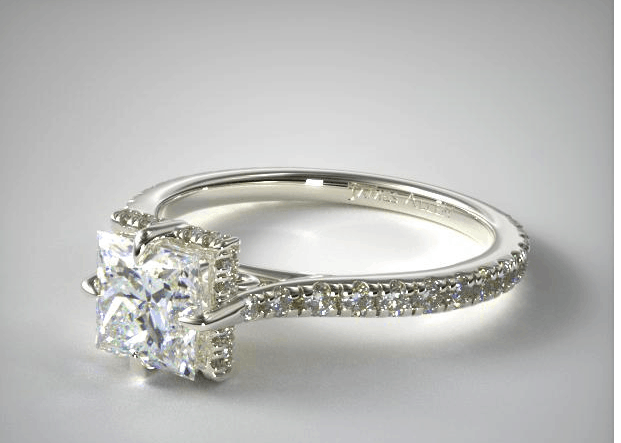
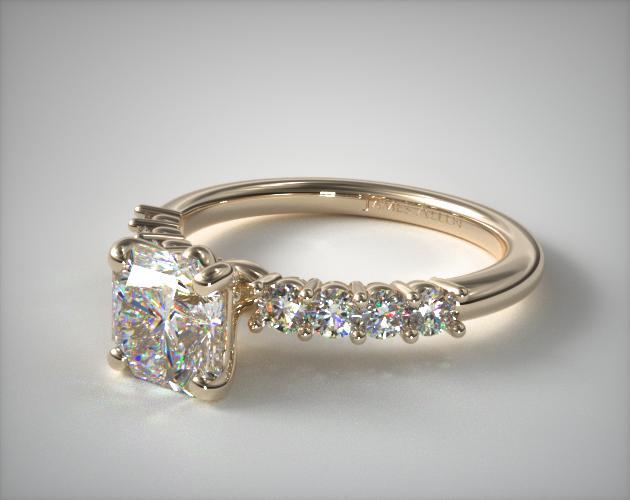
However, it is difficult to say which has a better sparkle as they are quite different in how they interact with light. The best way to determine which is more sparkly is to lay them side by side for a direct comparison.
The way these two cuts reflect light is quite different. The neat faceting pattern of the princess cut means that it often reflects light in an organized way with clearly defined facets, whereas the radiant cut’s sparkle can appear more haphazard due to the high number of facets and the faceting arrangement. This may often result in the radiant seeming more brilliant.
Remember that a diamond’s sparkle is influenced by other factors as well and not just by the cut of the stone. The quality of the cut and the quality of the diamond itself are some other aspects to consider when evaluating a diamond’s light performance.
Princess vs. Radiant – Color
The princess cut generally tends to hide any tints of color in the stone, due to their brilliance. This means that you can go down a grade or two on the color scale and still have a gorgeous looking diamond at great value.
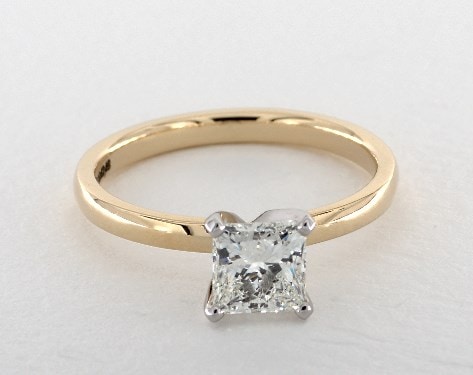
For diamonds meant to be set in silver-hued metals such as white gold and platinum, a color grade of I or better is recommended. However, if you’re setting the diamond in yellow or rose gold, you can risk going down even further on the scale to grade K or better.
Radiant diamonds tend to show more color than princess cuts, due to the way they reflect light. For silver metal settings, choose a color grade of H or better and for yellow and rose gold settings, choose grade I or better.
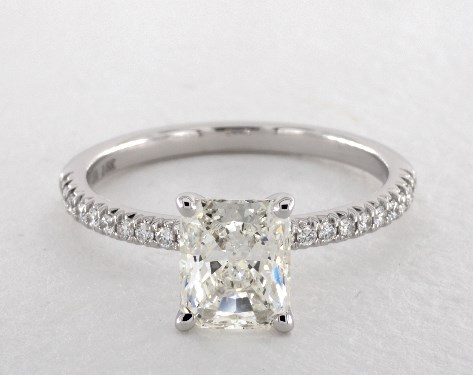
Remember that these are only guidelines and you would need to see images or videos of the actual diamond before you buy to ensure that the color does not mar the appearance of the diamond.
Princess vs. Radiant – Value and Availability
The princess and radiant diamond cuts are both relatively inexpensive options compared to round diamonds, but between the two, the princess tends to be more expensive than the radiant. One of the main reasons this is so is because the princess cut is much more popular and in higher demand. This naturally results in higher prices.
Compare the two diamonds below:
Of the two, the radiant is slightly less expensive than the princess. Of course, you will have to compare on a case by case basis as this is not always the case.
The princess diamond is much more in demand than the radiant and is easily available at most diamond retailers. As an example, the James Allen website currently lists 7,358 princess cut diamonds and only 3,670 radiant diamonds.
Princess vs. Radiant – Security and Settings
Because the radiant cut has truncated corners, it is not as vulnerable to breaking or chipping at the edges like the princess cut is. Radiant cuts go well with most types of settings, with prong and halo settings being the most popular.
The princess requires a protective setting to ensure that its sharp corners are shielded from damage and impact. Bezel and halo settings offer a high level of security for the diamond and are good choices for the princess cut. For prong settings, ensure that the prongs are placed protectively at the four corners.
If you lead an active lifestyle and engage in lots of vigorous activity, the radiant cut may be the better option for you as it is less likely to get damaged.
Princess vs. Radiant – Which Should I Choose?
Of the two cuts, the princess remains the more popular choice. When deciding between the two, consider durability, shape and popularity. Which of the two shapes do you find more intriguing? Also consider how the shape would look on your finger.
You can make use of With Clarity’s Home Preview service which allows you to design up to two engagement rings and have replicas mailed to you completely free of charge. You can then try out the replica rings for a few days to see how they look against your finger. If you can’t decide princess and radiant cuts, why not have two rings sent out to you to try?
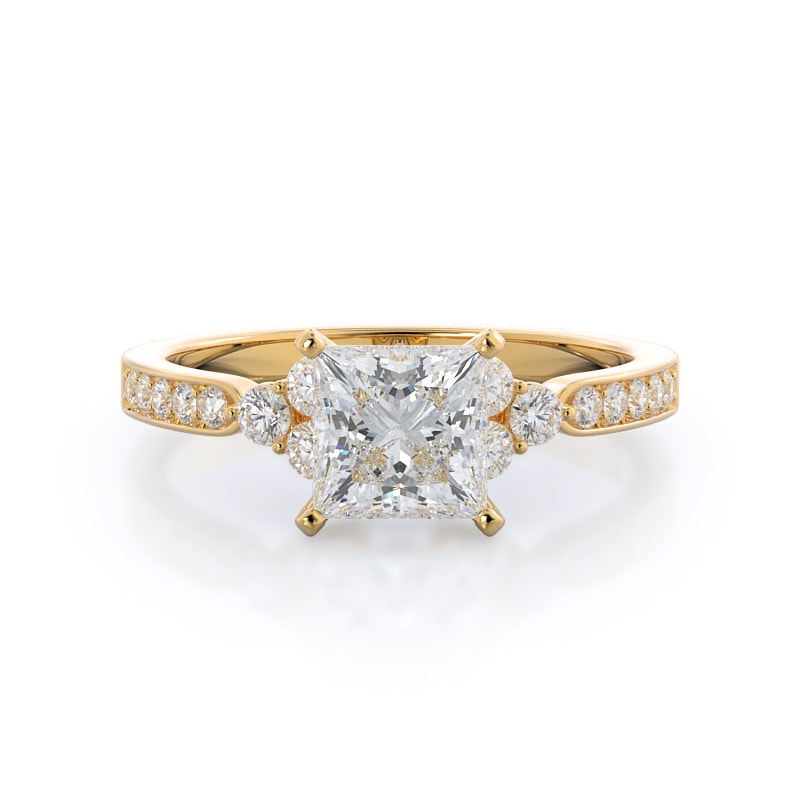
Note that you won’t be getting real diamonds but only replicas that looks and feels like the real thing. If you don’t like the look, simply return the rings with no commitment to buy.









